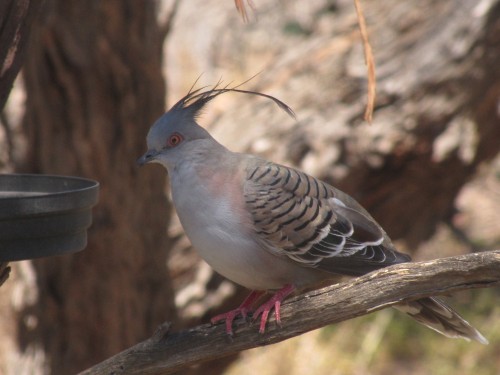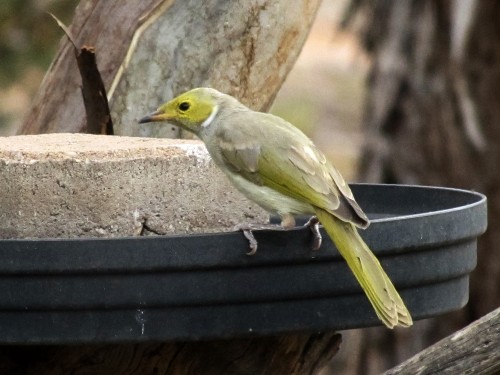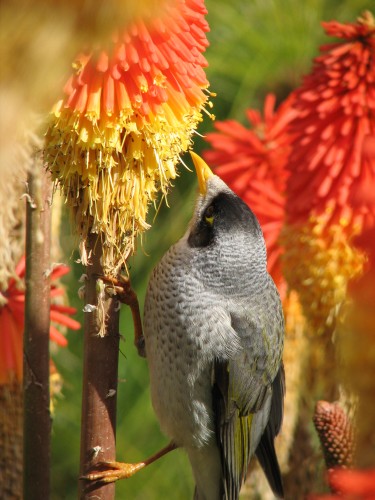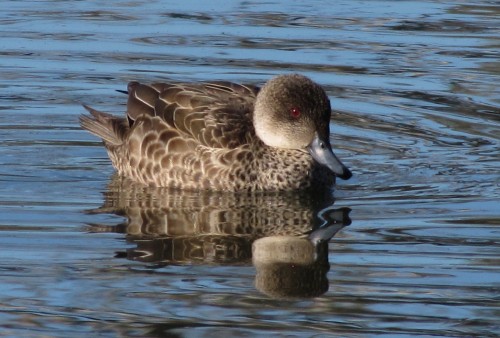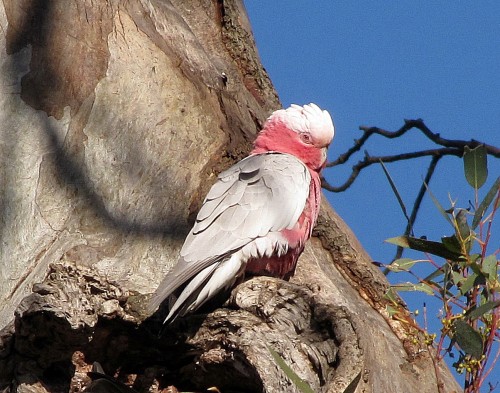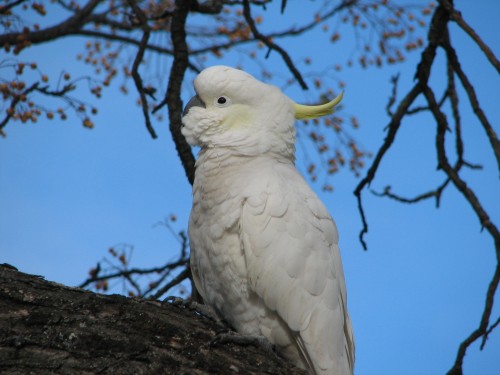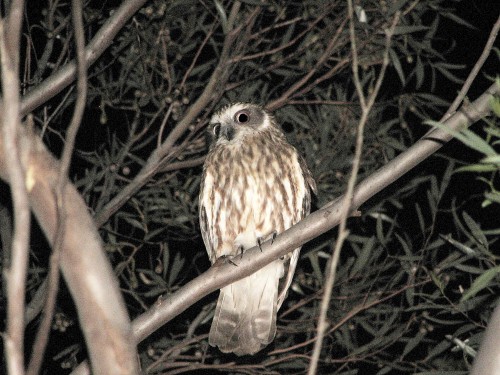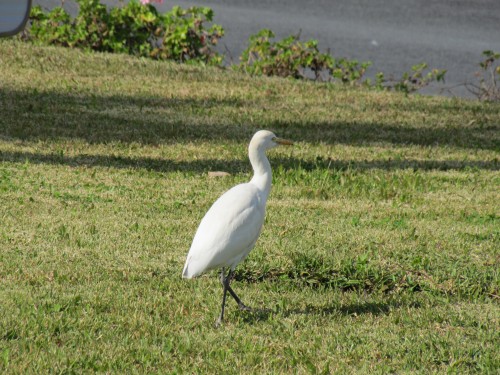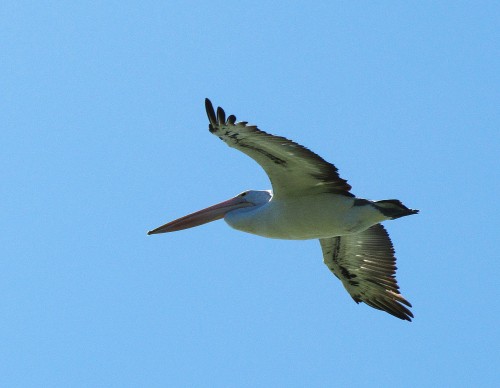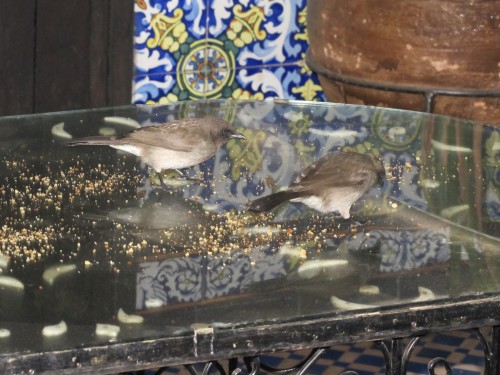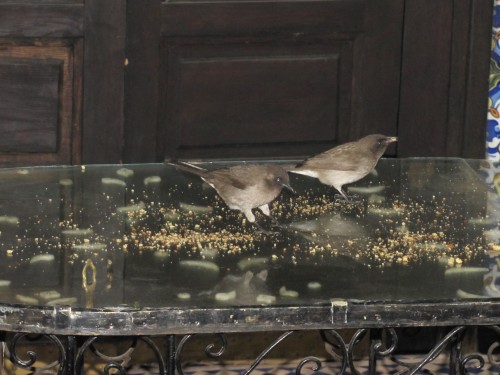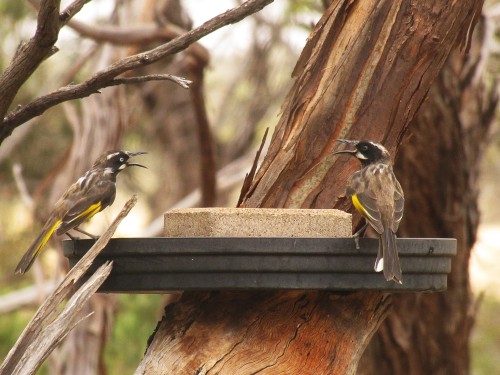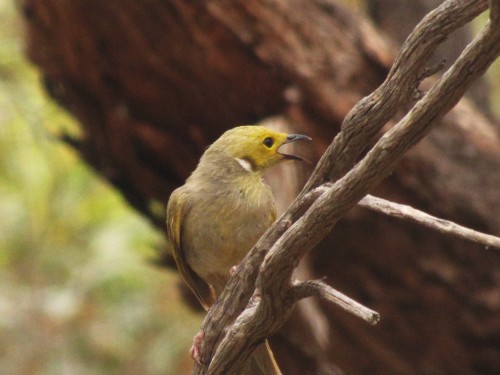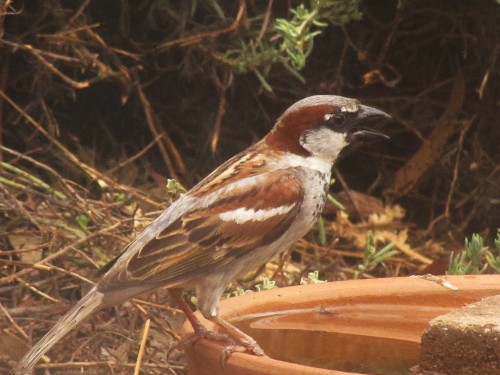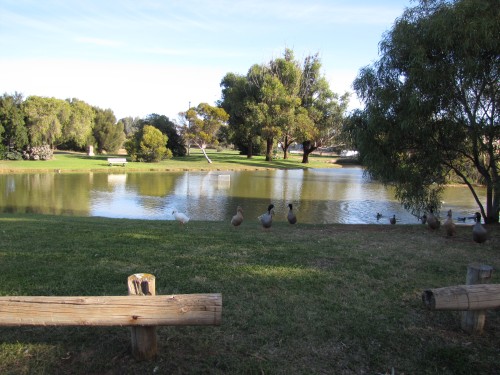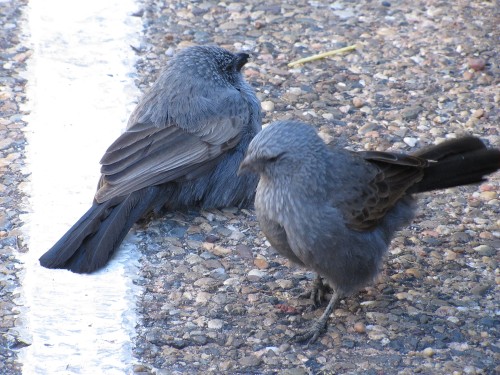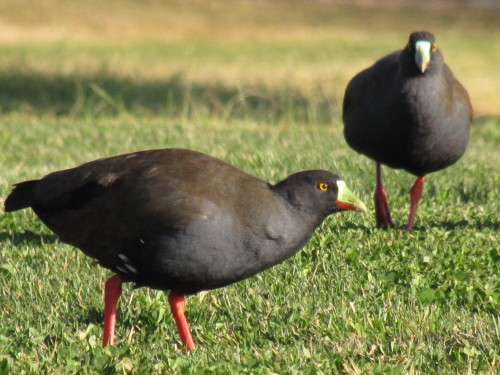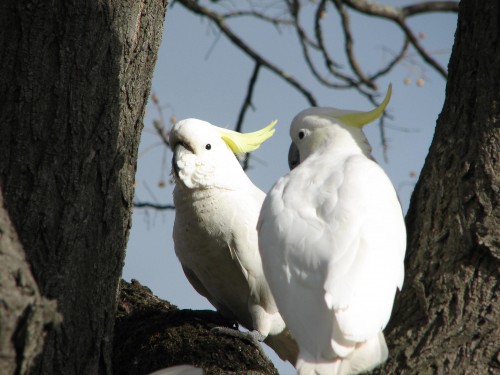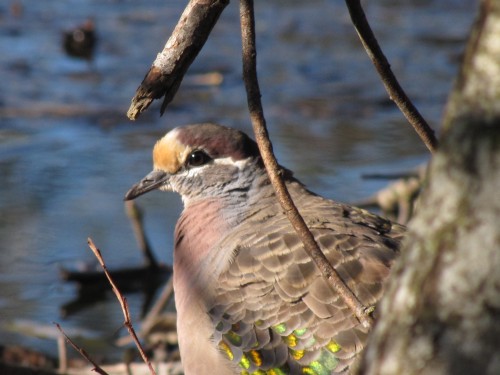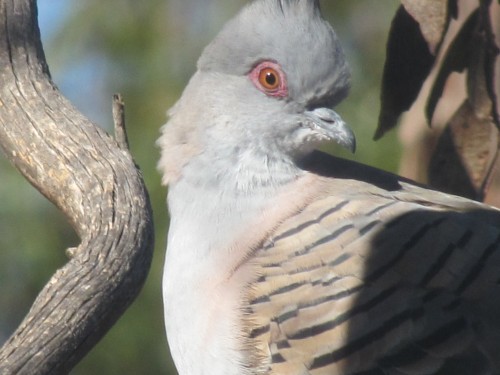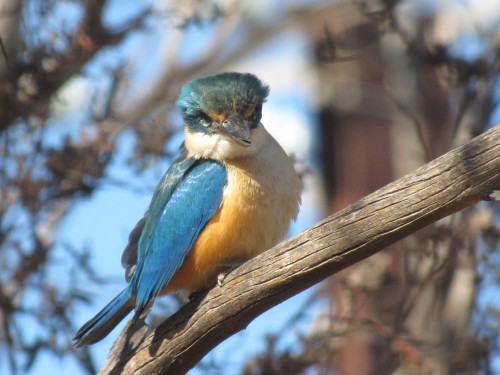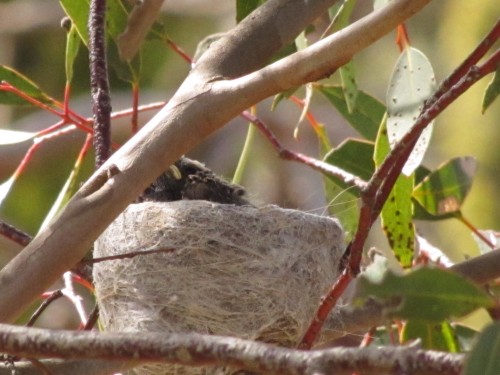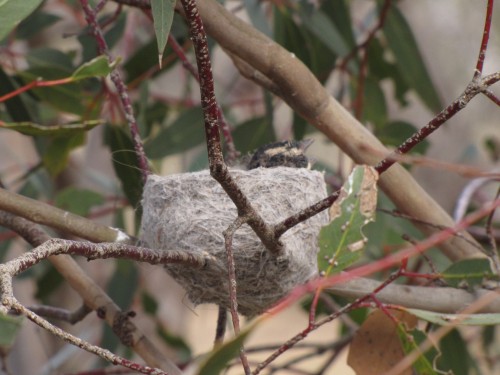Birding is easy
It has a been a long time since I wrote a basic post about birding.
Some years ago I wrote a series of 21 articles called How to be a Birder.
This post is not an update on that series. This is just a heads-up to new readers of this site. I was encouraged to write this in response to an article I recently read here. That article is for American readers. What I have to say is largely for my Australian readers – but the same principles apply nearly worldwide.
Birding is really easy
Birding is quite easy. Just glance out of the window into your garden. Do you see any birds? Perhaps you can see a pigeon or a dove or possibly a sparrow. You’ve just become a birder. One of our common birds here in South Australia is a Crested Pigeon, shown below. (Okay – some of you will know it as a “Top Knot” Pigeon, but strictly speaking, that official name belongs to a bird found in the eastern parts of Australia.)
Binoculars and Bird Baths
I usually keep a cheap pair of binoculars handy where I can get to them quickly. We often spend a good part of the day in our sunroom which overlooks a part of the garden. A large picture window in this room gives us a great view of several bird baths. The binoculars give me a great view of any birds which come for a drink or a bath. Installing a bird bath in your garden, even a small garden, can help to bring the birds closer for you to watch – birds like the honeyeater in the next photo.
Into the garden
A short stroll out into the garden or even down the street can reveal plenty more birds. Keep a watch out for any movement in plants, bushes and up in the branches of any trees growing nearby. Pay special attention to any flowers you see – Australian honeyeaters and parrots love the flowers of both native Australian plants as well as exotic plants. The Noisy Miner shown in the photo below is sure enjoying a feed from a red hot poker flower.
Go for a picnic
Another good way to become a birder and to begin enjoying our birds is to go for a picnic. This could be to a local park, a nearby river, lake or beach or to your nearest botanic gardens. In these places, you are sure to find a good variety of birds, especially if there is a water feature or natural body of water. Becuase such places often have crowds of people, many of the birds will have become quite accustomed to humans and you will be able to get up quite close. Near and in the water you will find ducks, geese, herons, egrets, grebes, coots, moorhens, cormorants and many more that I haven’t listed here.
Although it may be tempting and satisfying, please do not feed the birds. Human food, especially bread, is not suitable for Australian birds. In fact, it can kill them.
Go hiking or camping
Australia has hundreds of National Parks and Reserves in every state. These locations are almost always excellent places to go hiking, having a barbecue or picnic or even camp overnight or for longer. Because these areas are usually natural bushland, the birding can also be wonderful, especially in spring here in Australia when many birds are nesting. Keep on the lookout for birds in the bushes and any vegetation, as well as higher up in the branches of the trees. The photo of a Galah shown below was taken at a wetland area near my home. The wetlands area is actually a sewage installation, beautifully landscaped with many bushes and trees.
Birding while travelling
Warning: keep your eyes on the road and on the traffic all around you!
Yes, I also watch out for the birds I see while travelling. We have relatives and friends in many parts of Australia and visiting them sometimes entails many hours – and sometimes days – of travelling our countryside. As we go along I keep my eyes on the traffic and road conditions, but over many years, I have also become adept at watching out for any birds on the side of the road or flying over the road. Birds of prey like eagles and hawks are common along our country highways, as are ravens, choughs, magpies and currawongs. Sometimes this can be frustrating when it comes to identifying them as we speed by in our car, only getting a brief glimpse of the bird.
From time to time, it is safe to stop and get a closer look at a bird, even getting a photo if I have the camera handy. A few years ago I was driving slowly in an Adelaide street after dropping off my wife at a hospital. I was able to stop safely and quickly and get the photo of a Sulphur-crested Cockatoo which I have shown below. There was a small flock of these lovely birds right there in a suburban street tree.
Birding at night
For some people, this might be a little difficult, depending on the environment surrounding their home. It possibly wouldn’t work if you live in a high-rise apartment in the heart of a city. On the other hand, we live on the edge of a large country town with plenty of natural and planted scrub all around. We quite often switch off the television at night; there’s often nothing worth watching anyway.
The area around our home is often very quiet with very little traffic. On these occasions, we occasionally hear nocturnal birds such as owls, frogmouths or nightjars calling. The Southern Boobook Owl shown below was photographed in our garden some years ago.
Birding while commuting
One way of usefully using the time spent commuting is to do some casual birding from the bus, tram or train. I haven’t done this much in my life because I always drove a car to work. To illustrate my point, we recently did a bus tour of Morocco. Wonderful country. Along the way I was able to see quite a few birds while travelling along, even getting the occasional photo, such as the egret shown below, taken from the bus. On the other hand, travelling at 300 kph in the high-speed trains in Spain is just a little too fast to be watching out for any birds. Exhilarating, yes, but difficult.
More unusual birding places
In Bed: I like lingering in bed some mornings, trying to identify the bird calls outside without actually seeing them. This is particularly enjoyable when out bush camping, or in our caravan.
In church: I must confess that I have taken notice of birds while sitting in church. Our church has several windows which give me a good, but limited, view outside. Not getting distracted from the sermon can be a challenge.
At a funeral: Again, I confess to sometimes being distracted by birds at a funeral, especially during the committal if this is held outdoors. I refrain from taking my camera or binoculars on such occasions. The same applies to when I am in church.
In a plane: It is possible to see some high flying birds from planes, but I am talking about birds seen on the tarmac while waiting for the plane to leave, or while taxiing on the runway. I managed to see birds from the window of a plane in Adelaide, Kuala Lumpur, Dubai and Addis Ababa. Now if you add birds seen from the terminal while waiting for a flight, the list gets longer.
On a canoe, boat or ship: I have watched birds from my canoe on many occasions. I have also taken many photos from a friend’s boat on a nearby lake (see the pelican below). I even did some birding while travelling on a ship (ferry) from Morocco to Spain.
In hospital: Thankfully, I have only been in hospital on a handful of occasions. I have, however, visited people in hospital. Whenever there is a suitable window with a garden outside, there is always the potential to even be a birder while recuperating in bed.
How about you?
- Over to my readers; where do you like to go birding?
- What unusual places have you been birding?
- Leave a comment or two; I would really appreciate that.
Good birding,
Trevor
Postscript: In a restaurant: we stayed in a beautiful riad in Marrakech, Morocco. Because it was open to the sky, the birds were free to fly into the restaurant area. The owners even put out seed to attract them. See the photos below.
Birds in the heat
Here in South Australia we are experiencing our hottest summer on record. I won’t bore you with the details, but just say that we have had far too many days in the 40s (45C is equal to 113F). During such heatwaves – which can last for several days – our bird population suffers terribly. On these days the resident birds in our garden really appreciate the various bird baths we have placed in suitable locations.
Even on a warm day we get a constant parade of birds visiting the various bird baths in our garden. Our sun room overlooks several of them and this affords me an ideal location to take photos of them. Some birds still visit the water even on quite cold days – but we haven’t had many of those lately.
Probably the most common visitors would have to be the honeyeater species, including:
- Red Wattlebirds,
- White-plumed honeyeaters,
- New Holland Honeyeaters,
- Brown-headed Honeyeaters
- Singing Honeyeaters
- Spiny-cheeked Honeyeaters
Other regular visitors include:
- Australian Magpies
- White-winged Choughs
- Grey Currawong
- Australian Magpie Larks
- Crested Pigeons
- Spotted Turtledove
- Striated Pardalote
- Spotted Pardalote
- Silvereyes
- House Sparrow
- Common Starling
- Common Blackbird
A very short birding trip in Peterborough
Last week we spent several days visiting family in Peterborough in the mid-north of South Australia. The main focus of this trip was a belated Christmas family get together. My son’s family who were over from Sydney for a few weeks was the main focus, but it was also great to catch up with family members on my wife’s side of the family.
The weather was far too hot to do anything other than casual birding in the back yard. The only interesting sighting over the four days was a solitary Little Eagle soaring majestically overhead early one morning. The Peterborough area is an interesting region from a birding point of view. While many of the species seen further south are present, one can also see some of the more arid region birds around the town and in the nearby farming areas. This is about as far south as some of these arid dwelling birds venture.
One spot I always try to check out when visiting Peterborough is Victoria Park. This park, next to the town’s lovely swimming pool and caravan park features an artificial lake (see photo above). On and around this lake I have recorded quite a good range of water birds, one of the few spots in the region with enough water to sustain a small population of such species.
On this occasion we were actually on our way home. We left early to beat most of the heat of later in the day. I only drove though the park and didn’t actually stop. I guess that our visit was no longer than 2 minutes – if that. During that short time I saw the following species:
- Apostlebird
- White-winged Chough
- Australian Magpie
- Black-tailed Native-hen
- Pacific Black Duck
- Australian Wood Duck
- Mallard
- Australian Magpie Lark
- Crested Pigeon
- Galah
- Red Rumped Parrot
- Red Wattlebird
- Little Raven
It is not a long list but it does contain two interesting sightings.
Apostlebird
While Apostlebirds are quite common in the eastern parts of Australia, they are relatively rare in South Australia. They can only be seen in a handful of places. I have recorded them in the following locations:
- Taplan (SE of Loxton),
- Gladstone (mid-north of SA),
- Laura (just north of Gladstone)
- Stone Hut (just north of Laura)
- Appila (north of Gladstone)
- Peterborough (various locations around the town and district)
- Dawson Gorge (NE of Peterborough)
Several other locations have been reported by other birders in recent years. Peterborough is one of the more reliable spots for this species in South Australia. Over recent years I have seen the species in at least five spots around the town. You can read more about this species – go to the further reading section below.
Black-tailed Native-hen
On my recent visit to Victoria Park in Peterborough I saw about 5 Black-tailed Native-hens. I have seen this species on quite a few visits to this park. While the species is not rare it is unusual to see them in such a dry region as this. I suspect that these birds may actually be a resident breeding species. In some places, if the conditions are right, they can breed rapidly and within a short space of time number in the hundreds and even in the thousands. On previous visit to this park I have seen 20 – 50 birds.
Further reading:
- Apostlebirds in Peterborough
- Apostlebirds by the dozen
- Apostlebirds at Taplan in the Murray Mallee
- Apostlebirds in South Australia
A close encounter
Quite frequently I have close encounters with our bird life, especially those which are resident in our garden and on our five acre block on the outskirts of Murray Bridge in South Australia. Sometimes I have the camera with me, sometimes I have to race off and get the camera. And then… there are those occasions when the bird flies off immediately.
Yesterday morning I was just finishing having breakfast, reading the daily paper and doing the cryptic crossword (yes, I solved it). I just looked up to check the bird bath – the one shown in the photo above – when a White-plumed Honeyeater landed on the window sill less than 50cm from where it was sitting. After staying for all of 5 seconds it flew off. No time to get the camera.
Then this morning the same thing happened, but this time a small movement on my part sent the bird flying off without actually landing.
Mmm… that makes me think. I wonder if this particular bird is coming to the window on a regular basis? I wouldn’t be surprised if it was coming to snaffle an insect or a spider lurking around the window frame. Or perhaps it was after some spider’s web to softly line a new nest?
(Embarrassed silence.)
I probably – no definitely – need to clear all the spiders’ webs around the house – but then, I am trying to be ‘bird friendly’. (Notice how I neatly side-stepped doing some house maintenance?)
For more articles about my close encounters with birds click here.
I have included a few more photos of close encounters with birds below.
Baby birds everywhere
Over the past month or so the area around our garden has been full of birds nesting, sitting on eggs, feeding young or busy feeding the fledglings after they leave their nest. Spring time here in South Australia is the main breeding season for many species of birds, especially the bush birds. Many of our trees and shrubs are also flowering which means plenty of food for the birds, both the nectivorous and insectivorous species.
Here is an annotated list of the species I have observed nesting or feeding young this spring, plus a few species I suspect have been nesting nearby. All of these observations have been in our garden or on our 5 acre property in Murray Bridge, South Australia.
- Willie Wagtail – the photos of the nest (above and below) on today’s post are of the nest with two babies just peeping over the top of the beautiful cobweb lined nest. They have since fledged and are flying around begging for food.
- Australian Magpie – I knew that our resident magpies were nesting but it was only when the young started calling to be fed that I found the nest. They had made a nest in a completely new tree this year. Last year’s nest tree was blown over by one of our winter storms. (Must cut it up for firewood.)
- House Sparrow – these seem to be always nesting, not just in the spring.
- Common Starling – about a dozen tree hollows had nests in them and it is quite obvious when there are babies in the nest; their calling for food is incessant. Most of the starlings have now flown off to the fruit growing districts nearby.
- Red Wattlebird – there have been several fledged young wattlebirds getting around in recent weeks. I suspect that the adults may well be nesting again. The male continues to boss all the other smaller species quite unmercifully. They don’t like sharing their food, even though there is plenty to go around.
- New Holland Honeyeater – I saw several parents feeding young just out of the nest quite a few weeks ago. They may well be nesting again, but their nests are usually well hidden in dense bushes.
- Peaceful Dove – we saw a pair mating and they have been hanging around close to the house for many weeks. I have yet to find the nest – in part due to a very bad back at present.
- Crested Pigeon – this species always seems to be breeding, but they chose a bush quite a distance from the house this spring.
- Spotted Turtledove – again, due to my back I haven’t yet found their nest.
- Galahs – this one is tragic. After many attempts at breeding over several years in a tree hollow near the house they finally hatched a brood of young, only to see them die in the nest during an unseasonably hot spell several weeks ago.
- Common Blackbird – this species often makes a nest in our garden shed, but this year they seem to be nesting next door and only visit our garden occasionally.
- Australian Magpie-Lark – again, this species has chosen to nest in the neighbour’s tall trees. They visit our garden frequently to catch food for the young.
- White-winged Chough – another species which visits frequently – except in recent weeks. I often see them down the road about a hundred metres away, so they are probably nesting there.
- Little Ravens – although several of this species visit almost daily, I have yet to record them nesting in one of our trees, preferring to keep away from the magpies’ nest, I presume.
- White-browed Babblers – it has been quite a few years since they last nested in our garden but they are regular visitors – except in recent weeks – they must be nesting somewhere nearby.
- Superb Fairy-wren – our resident pair still seems to be around the house garden, but they are very quiet and secretive about the location of their nest.
- Cuckoos – we have heard the calls of the Horsfield’s Bronze-cuckoo a few times several weeks ago but have seen no evidence that they stayed long enough to nest.
- Other possibilities: White-plumed honeyeater, Singing Honeyeater, Spiny-cheeked Honeyeater, Yellow-rumped Thornbill, Weebill, Striated Pardalote, Spotted Pardalote.
